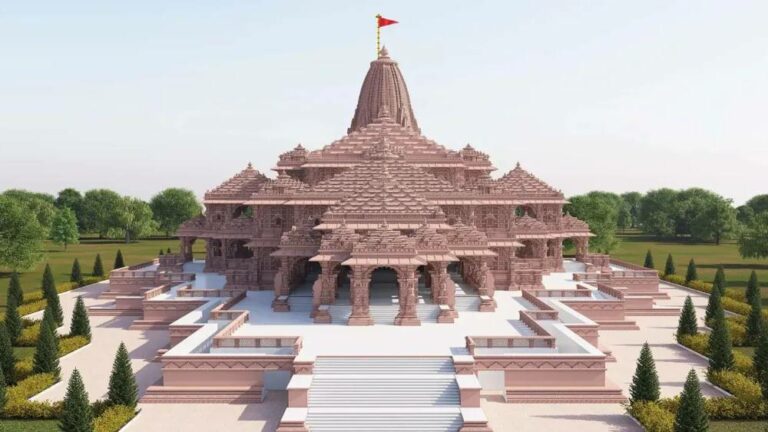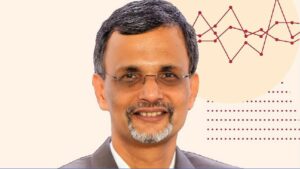The intersection of religious landmarks and economic vitality has long been recognized as a transformative force, transcending boundaries and fostering inclusive growth. With the construction of the Ram Mandir in Ayodhya serving as a focal point, the resurgence of temple tourism underscores the profound impact of religious destinations on local economies worldwide. Drawing insights from Ayodhya’s economic revival and global trends in spiritual tourism, this article delves into the multifaceted dynamics of temple economics, highlighting its role in empowering communities, fostering infrastructure development, and catalyzing economic growth.
The Ram Mandir’s construction has reinvigorated interest in Ayodhya, transforming it into a global pilgrimage destination akin to Mecca for Muslims. Notably, American investment bank Jefferies projections estimate that the Ram Temple could draw up to 100 million tourists annually. To put this in perspective, about 9 million people visit Vatican City annually, and about 20 million visit Mecca. In 2022, an estimated 100 thousand pilgrims visited the Harmandir Sahid (Golden Temple) in Amritsar on a daily basis.
There has been a discernible shift in visitor demographics, with multigenerational families, couples, and millennials embracing spiritual journeys as avenues for cultural exploration and personal enrichment. Beyond traditional pilgrimages, modern tourists seek immersive experiences, combining spiritual retreats with outdoor adventures and local cultural encounters. This evolution in traveler preferences underscores the evolving landscape of spiritual tourism, driving demand for diverse experiences and fostering cultural exchange.
The construction of temples often catalyzes significant investments in infrastructure aimed at enhancing visitor experiences and fostering economic development. In Ayodhya, projects totaling over $10 billion have been earmarked, encompassing airport expansions, railway upgrades, and township developments. These initiatives not only bolster urban renewal but also lay the groundwork for broader socioeconomic advancement, creating employment opportunities and improving connectivity.
Government data reveals that the federal government has allocated nearly $120 million to develop Hindu pilgrimage sites over the past decade, signaling a concerted effort to bolster infrastructure and promote religious tourism. Examples include the Kashi Vishwanath Corridor in Varanasi, which has witnessed over 130 million visitors since its inauguration in 2021, showcasing the transformative impact of strategic infrastructure investments on tourist influx and economic growth.
These endeavors underscore the pivotal role of infrastructure in facilitating sustainable growth and tourism expansion. The state of Uttar Pradesh (UP) is expected to generate a revenue of Rs 4 lakh crore due to the tourism boost from the new Ram temple.
The surge in temple tourism has spurred a boom in the hospitality sector, with Ayodhya witnessing a flurry of hotel openings and hospitality projects. Leading chains such as Oyo and Radisson have announced ambitious expansion plans, aiming to cater to the growing influx of pilgrims and tourists. Additionally, the inauguration of branded hotels and homestays underscores Ayodhya’s appeal as a destination for both religious and leisure travelers, generating employment opportunities and stimulating local economic activity. This trend mirrors developments around religious sites globally, highlighting the symbiotic relationship between tourism growth and hospitality expansion.
The influx of pilgrims and tourists often catalyzes a real estate boom in host regions, driving up property values and stimulating construction activity. In Ayodhya, the surge in tourism has led to the development of commercial and residential spaces, creating opportunities for local residents to capitalize on rising property values. Similar trends are observed in other pilgrimage destinations, such as Jerusalem and Mecca, where real estate development around religious landmarks fuels economic growth and urban expansion.
Beyond economic prosperity, temples play a pivotal role in preserving cultural heritage and fostering community identity. The construction of the Ram Mandir rekindles pride and reverence among residents, revitalizing Ayodhya’s cultural landscape and positioning it as a symbol of religious and historical significance. This cultural resurgence not only enriches the fabric of local communities but also enhances the appeal of Ayodhya as a destination for cultural tourism, attracting visitors from around the world.
The construction of the Ram Mandir in Ayodhya exemplifies the transformative potential of temple economics in driving inclusive growth, fostering infrastructure development, and preserving cultural heritage. Across the world, religious landmarks serve as beacons of spiritual significance and economic vitality, empowering communities and fostering cultural exchange. By harnessing the economic dividends of temple tourism, policymakers and stakeholders can chart a path toward sustainable development and community empowerment, ensuring that religious landmarks continue to enrich the lives of residents and visitors alike for generations to come.























